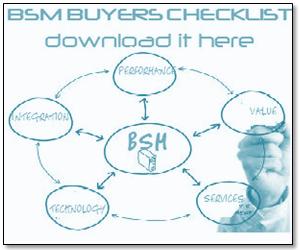Tale of Customer Service, Cost of Service Impact, Speed to Restore and the “Charley” View!
As we are in the heart of Hurricane season, I’m reminded of the old “Charley” Business Service View – a Category 4 Hurricane in 2004. This is a true story about a power company and how IT is impacted and how IT, by being proactive and hurricane prepared, can be the business driver in containing and managing the impending events that a hurricane brings with the loss of power due to downed lines. This is the second in a series of Business Service Management (BSM) Stories from the Trenches that I’ll post describing the benefits of a single-pane-of-glass and the management of complex infrastructures as services to the business and the customer driving customer satisfaction, revenue and growth.
The Set-up . . . . .
Just 22 hours after Tropical Storm Bonnie hit, Charley struck as a Category 4 Hurricane making it the first time in history that 2 tropical cyclones struck the same state in a 24 hour period. While the power companies have a bit of time to prepare for storms, managing the 2004 season was a tough one. So what is relevant to the power companies and what does IT have to do with the delivery of electricity:
* >3 million power consumers in the region
* Customer service applications become key
* Responding to customer complaints and logging them
* Using the customer calls to identify all outages
* “Keeping the Lights On” in the customer response center becomes key
* Dispatch systems are operationally key
* Returning service to customers in a time of need relies on IT doing more than just “Keeping the Lights On”
The Solution . . . . .
We need to know what to work on first in a “sea of red”and we know that due to power issues we will be inundated with network and systems management events. Managing those key customer and operational systems will take on a higher priority than anything else. This requires 4 things:
* Identify key customer and operational services in adverse situations
* Filtering of the intelligent service model to focus on newly prioritized services
* “Live”, single-pane-of-glass prioritizing events automatically
* Proactive service view to manage key systems averting downtime
We have monitoring in place, but we do not have a way to pull it together and marry it in a meaningful way to the infrastructure and we need to create a Service View of the infrastructure. This will require a lot of integration to meet the “live” requirement so that we can take action in real time and avert service impacting events, to filter the view to changing conditions and prioritize events.
This is where Novell’s Business Service Management came in to integrate, build the intelligent service models, automate the filtering of services, prioritization of events and the “Charley” dashboard that drove the delivery of high quality service of key customer and operational services.
The Benefits . . . . .
* >500,000 customers lost power
* >6,000 crews were dispatched successfully
* <1 week, 98% power restoration
* Exceeded the committed goal of 10 days for power restoration
IT does not restore the power and IT is impacted by the loss of power, but IT is critical in delivering the services that enable those to restore the power by connecting customers and line crews. The Intelligent Service Model and the automation of filtering services and prioritizing events ensures that systems are available that aid in power restoration. This is not an uncommon story for customers of the Novell Business Service Management solution. The heart of solution is the “live” integration and the intelligent service model making sense and relating bits of disparate data as super objects with rules describing conditions and state enabling operational teams to service align, mitigate risk and deliver mission critical services with consistent high quality driving the business.
I often run into IT folks that do not believe IT is critical to the organization. I find that is because they have not invested in understanding and aligning to the business objectives. Electricity is commodity, however, IT is key to driving revenue in getting power flowing again and the restoration of service in a time of need and adversity. Ask yourself what your company delivers to the public and how IT impacts driving the services that support that revenue and you have your answer as this power company did in determining where to focus and how that focus changes due to conditions. Are you agile enough to monitor, manage and measure to changes in real-time?
When Mission Critical Services is All About — “Keeping the Lights On”!
Check out this article of yet another energy company, again containing & mitigating risk: An Integrated Utility Network














